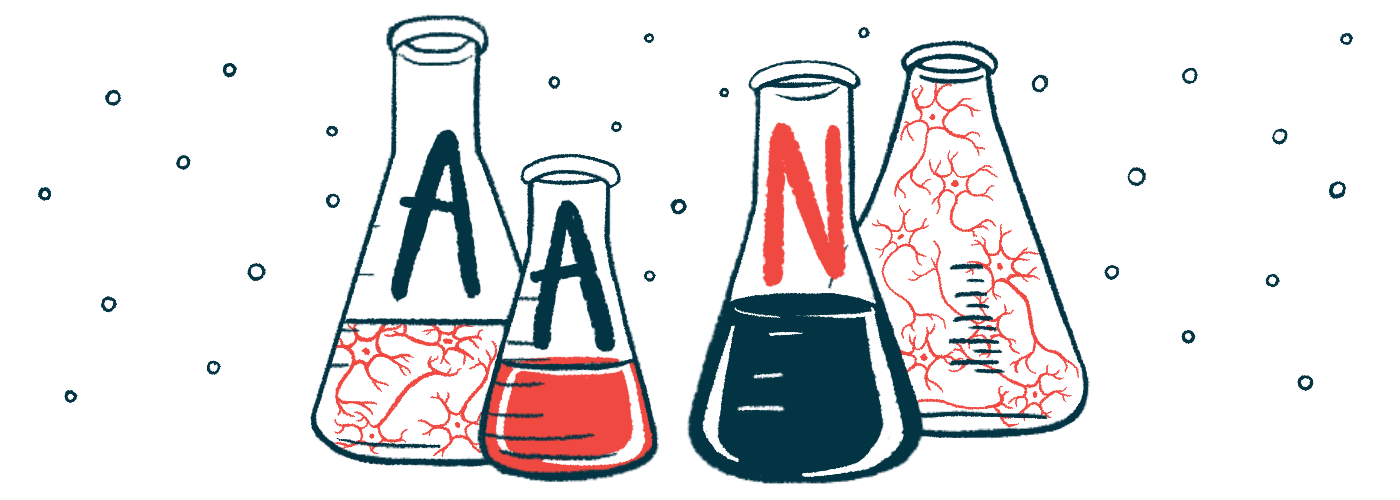AAN 2023: NMOSD antibodies seen in blood years before symptoms
Blood samples were positive for AQP4-IgGs nearly six years before symptoms
Written by |

Antibodies against aquaporin-4 (AQP4) are detectable in the blood several years before symptoms occur in most people with neuromyelitis optica spectrum disorder (NMOSD), according to a U.S. study.
Tammy Smith, MD, PhD, of the University of Utah, presented the findings at the recent American Academy of Neurology (AAN) annual meeting in the talk “Presymptomatic Aquaporin-4 (AQP4) Autoantibody Seropositivity in NMOSD: Analysis of the Department of Defense Serum Repository (DoDSR).”
NMOSD is a neuroautoimmune disease caused by abnormal immune system attacks against healthy parts of the nervous system. These attacks are driven in part by self-reactive antibodies that commonly target the AQP4 protein.
While anti-AQP4 antibodies, or AQP4-IgGs, play a key role in driving NMOSD, data suggest they aren’t sufficient to cause the disease on their own. Other factors, such as the activation of the immune’s system’s complement cascade must occur too, though these triggering mechanisms remain poorly understood.
AQP4 antibodies before NMOSD symptoms appear
Smith and colleagues assessed how far back AQP4-IgGs are detectable in blood before the onset of NMOSD. The analysis took advantage of a large number of blood samples from Department of Defense Serum Repository (DoDSR).
“The Department of Defense collects [blood] from healthy, active-duty military members throughout their careers and banks it in a freezer … and they have millions of samples available,” Smith said.
Using Defense department healthcare data, the researchers identified 64 people with a confirmed NMOSD diagnosis who had blood samples collected before their symptoms came on, up to 20 years prior.
Samples from 64 people with multiple sclerosis (MS), another neuroautoimmune disease, and 64 healthy people, matched for sex and age, were also analyzed. MS, like NMOSD, damages the brain, but anti-AQP4 antibodies are not a feature of it.
None of the MS patients nor healthy people had AQP4-IgGs in their blood at any assessed point. Most NMOSD patients were positive for the antibodies, however.
While the time between sample collection and disease onset varied across NMOSD patients, the data suggested most had detectable AQP4-IgGs in their blood long before NMOSD symptoms first appeared.
Blood samples were positive for AQP4-IgGs nearly six years before the onset of symptoms, on average, and half the patients were positive at least three years before the first attack, “which is really quite striking,” Smith said.
When looking at a subset of patients who were positive for anti-AQP4 antibodies at all evaluated timepoints, the researchers found these antibodies were detected up to a decade before symptom onset.
High levels of AQP4-IgGs were also detected in several patients while they still showed no disease symptoms.
Among those with detectable AQP4-IgGs before symptom onset, the levels of antibodies tended to gradually increase over time before the symptoms appeared.
These findings highlight that “patients with NOMSD may be AQP4-positive years prior to the onset of disease,” Smith said, adding there was still much to learn “about how symptomatic disease is triggered.”
Researchers plan to look at other self-reactive antibodies and infection markers that “might precede the first attack” and also conduct a comprehensive protein analysis to better understand what triggers the first symptoms, Smith said.






